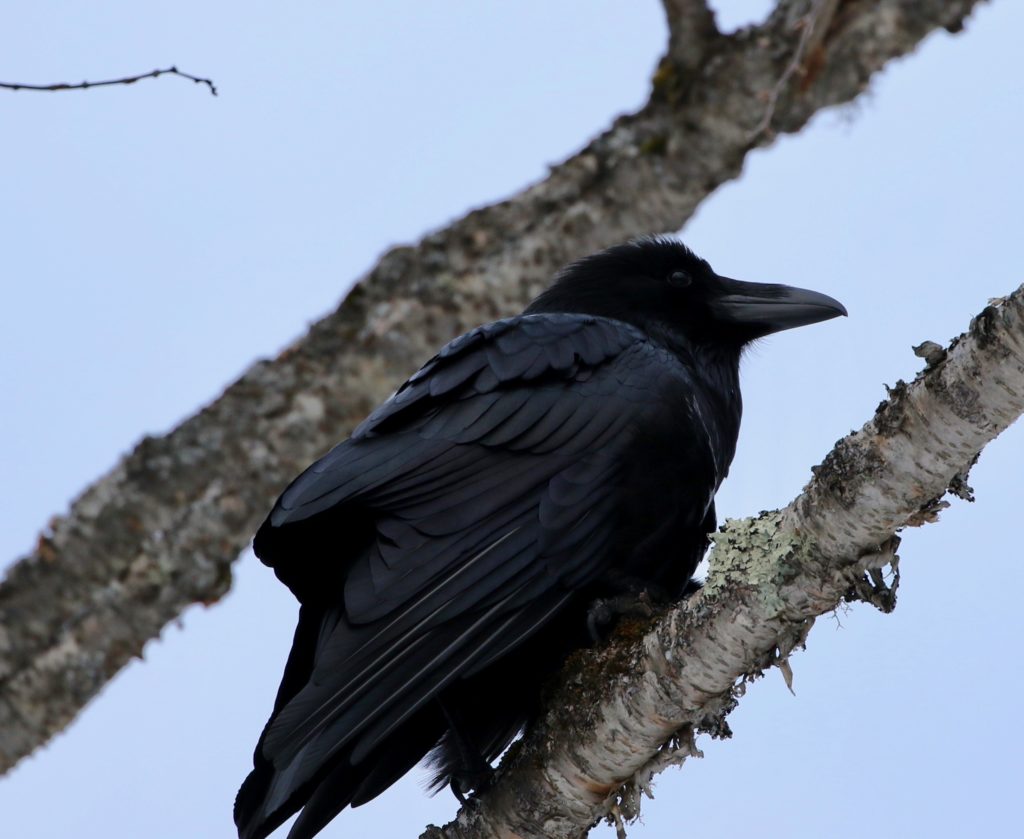Algonquin Provincial Park is one of the finest places in North America to see winter birds, those boreal species that rarely come down to more southerly locations. Situated in central Ontario, the park is a three-hour drive north of Toronto and about the same distance west from Ottawa, Canada’s capital city.
I spent two days in Algonquin near the end of January to photograph birds that, most winters, I can’t find in Toronto, my home town. These included different types of finches, crossbills, and grosbeaks, as well as certain species of grouse and jays. Our main target bird was the beautiful but uncommon and retiring Black-backed Woodpecker, whose back has the color intensity and shine of buffed black shoe polish. We were hoping to see a male, which bears a yellow badge on the forehead, a feature that the female lacks. The Black-backed is one of the few woodpeckers that only has three toes instead of the standard four. Altogether, an intriguing package of a bird.
We started the day by driving along Highway 60, the paved road that intersects the park from west to east. We pulled to the side and stopped whenever we noticed a flock of birds, either on the road or in the nearby evergreens. In the morning, finches and sparrows tend to congregate along the roadside not just to feed on seeds and road salt but also to collect gravel for their crops. We saw several flocks of American Goldfinch in winter plumage and smaller numbers of Purple Finch, most of them females with prominent white eyebrows.

After searching for an hour, we finally found some White-winged Crossbills in a grove of white spruce. This bird often sits at the top of its chosen tree, which makes it relatively easy to photograph, even from a distance. A handsome bird in profile with bright white wingbars, a cherry-colored head and breast, and its distinctive bill, like a screwed-together pair of scythes. This unique device allows the crossbill to extract seeds from spruce and hemlock cones, its favorite food.
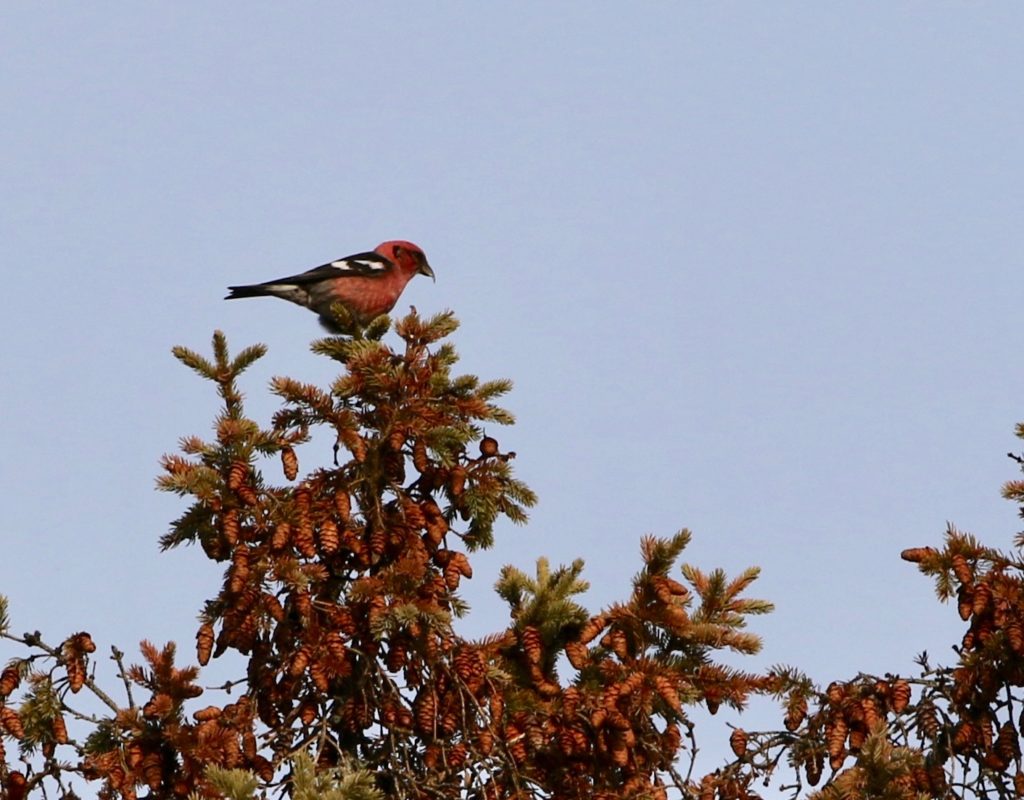
At the Visitor’s Centre, the staff maintain several feeders that can be viewed from the back deck. While we were there, a flock of Evening Grosbeaks came into the feeders. This is one of the largest and most strikingly colored of all the North American finches. The male, with his broad shoulders and black-and-gold-and-white plumage, bears a slight resemblance to a football player in his game-day uniform, perhaps a Pittsburgh Steeler or Hamilton Tiger Cat.
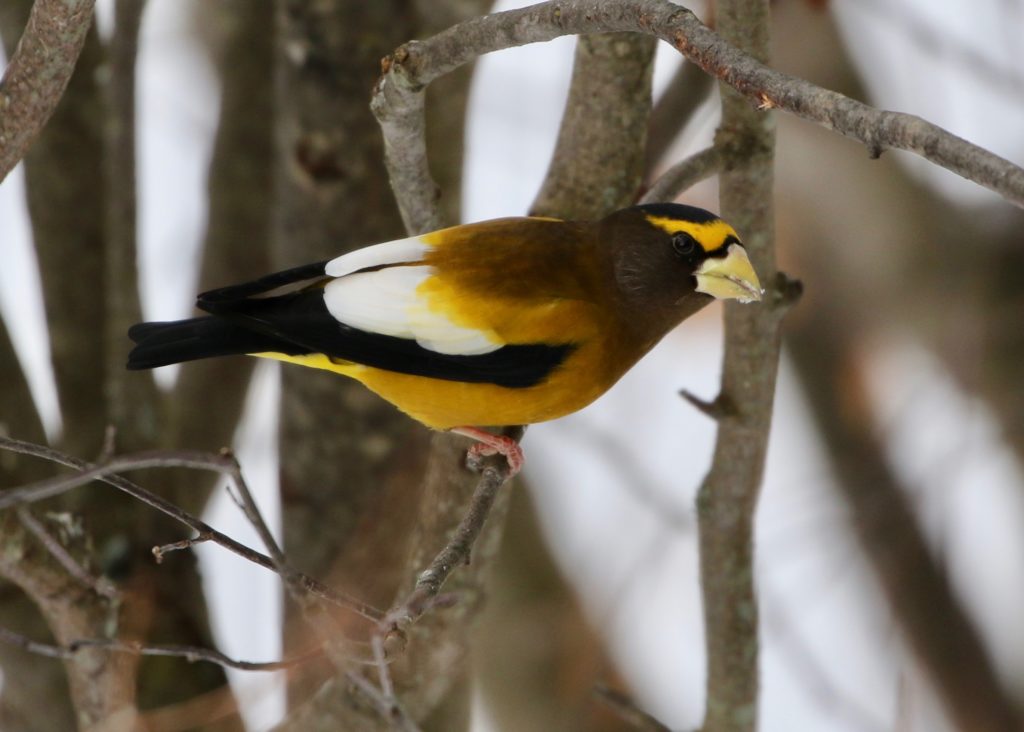
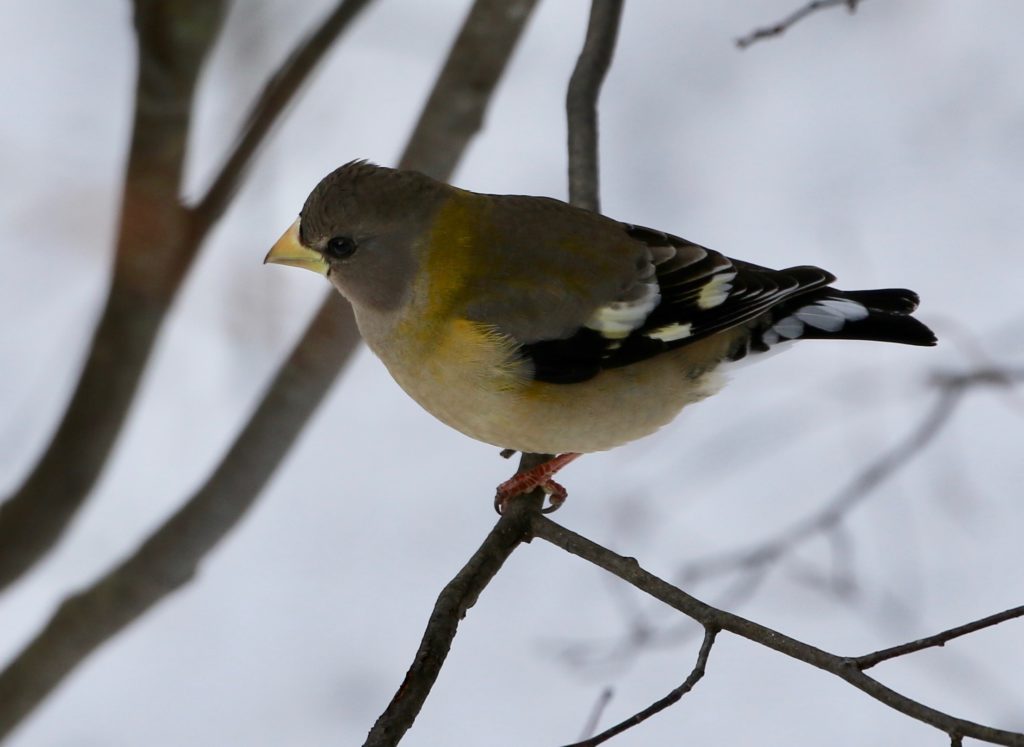
After lunch, we returned to the deck and found a somewhat unexpected guest on the ground below the feeders. The Ruffed Grouse, like many upland game birds, has a plumage that in its warm, autumnal tones and complexity of design reminds me of the Dutch painters from the 17th century, particularly van Ruisdael.
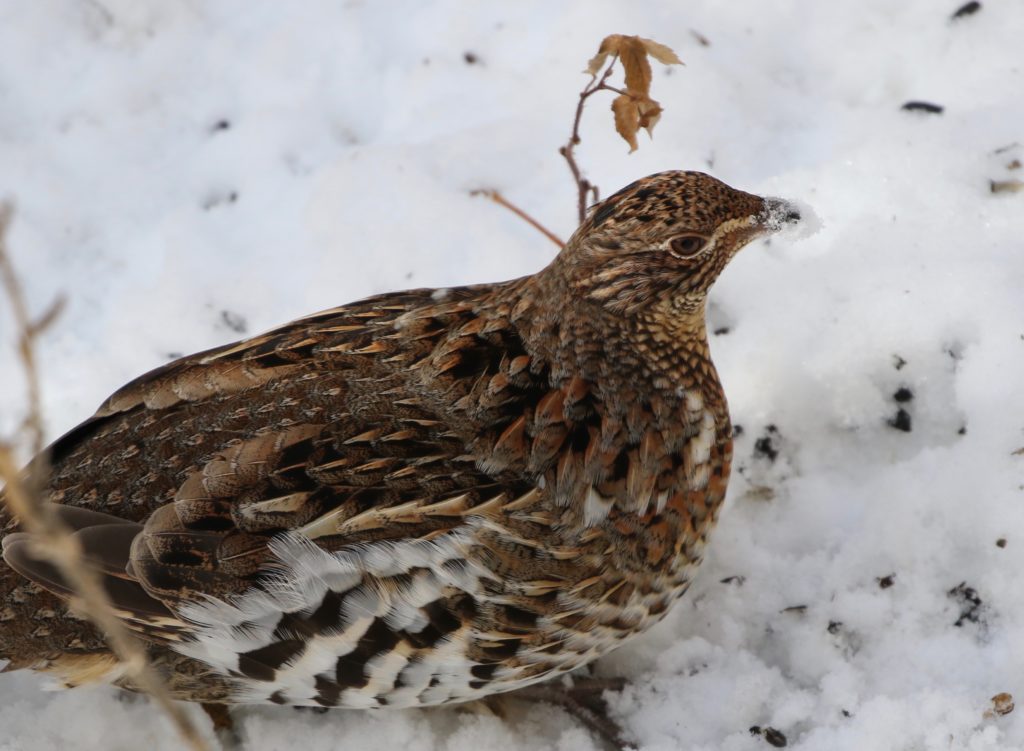
From the Visitor’s Centre, we drove to several different trails searching for the Black-backed Woodpecker. We had no luck, even in places where the bird had been reported recently or where my friends had seen it on previous trips.
Our last stop was a trail called the Spruce Bog Boardwalk, which, because of its abundant spruce trees, has been a productive location for both Spruce Grouse and our target woodpecker. Black-backed Woodpeckers prefer conifers to deciduous trees. They forage for beetles and other insects not by drilling but by scaling away the bark, and this is more easily done on a spruce tree than with an oak or maple.
On the boardwalk, we found no grouse but for the first time encountered a pair of Gray Jays, an Algonquin specialty also known as Whiskyjack, an English corruption of the Cree name for the bird. The Gray Jay is an almost comically bold bird that likes to hang around campsites to cadge handouts or to steal whatever food it can. It resembles an overstuffed and very fluffy chickadee. In fact, it often appears in the company of Black-capped Chickadees, and of its distant and much noisier cousin, the Blue Jay.
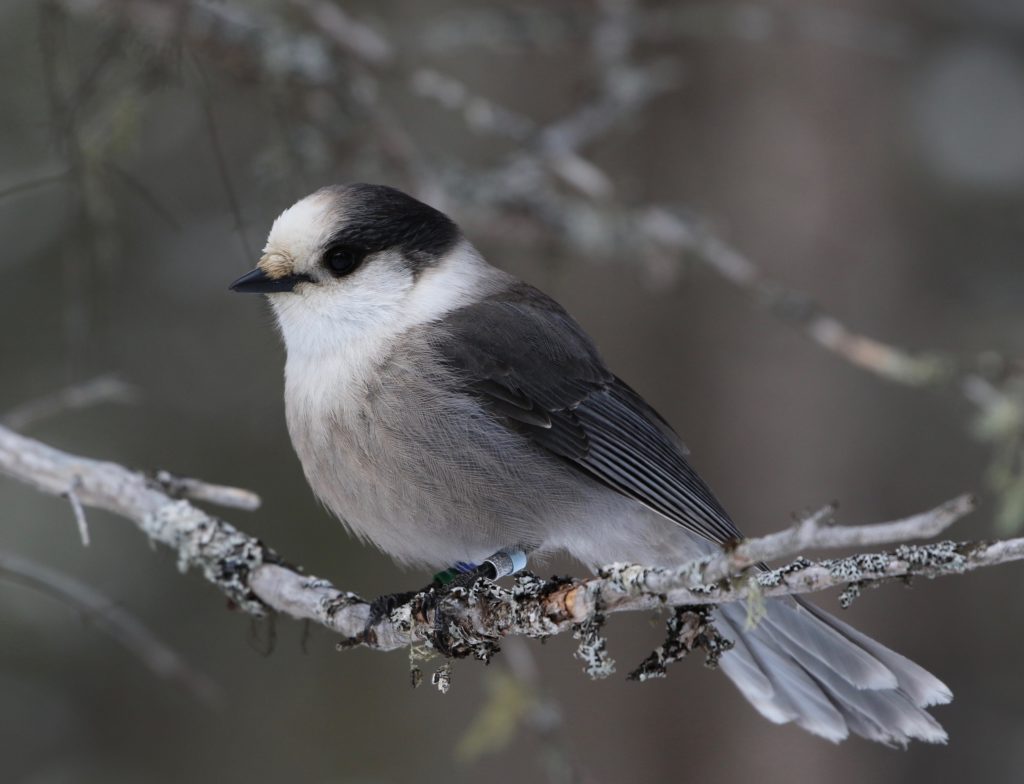
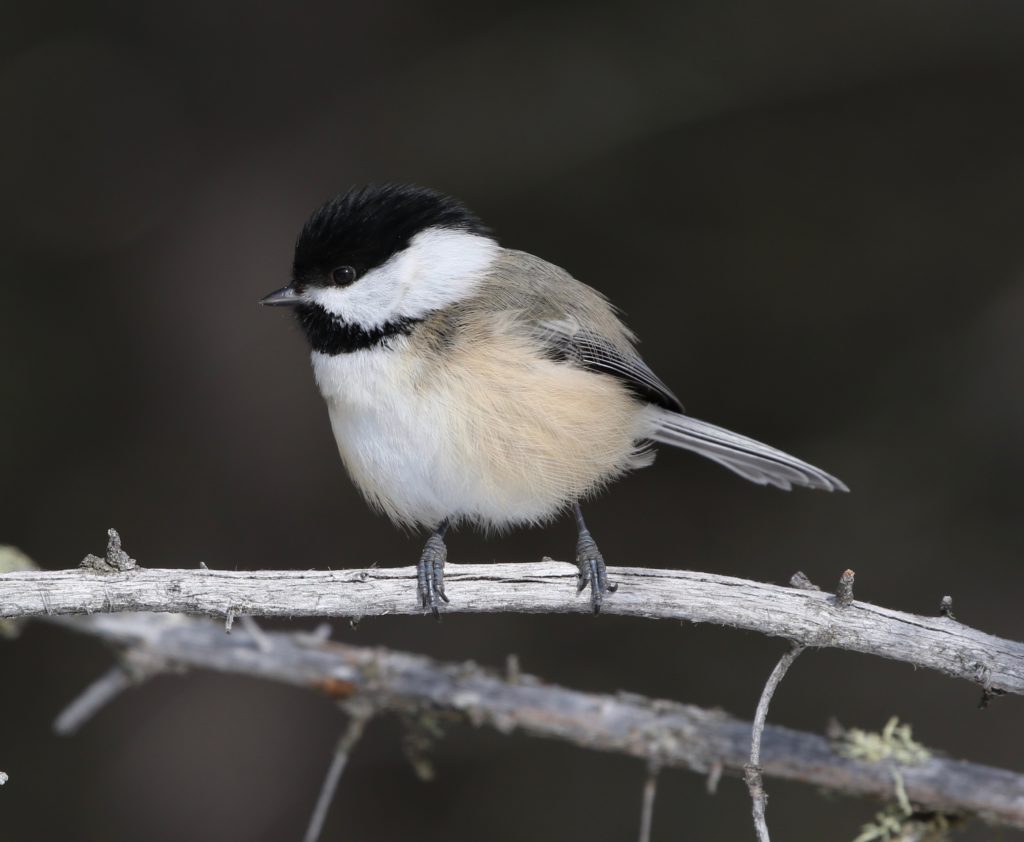
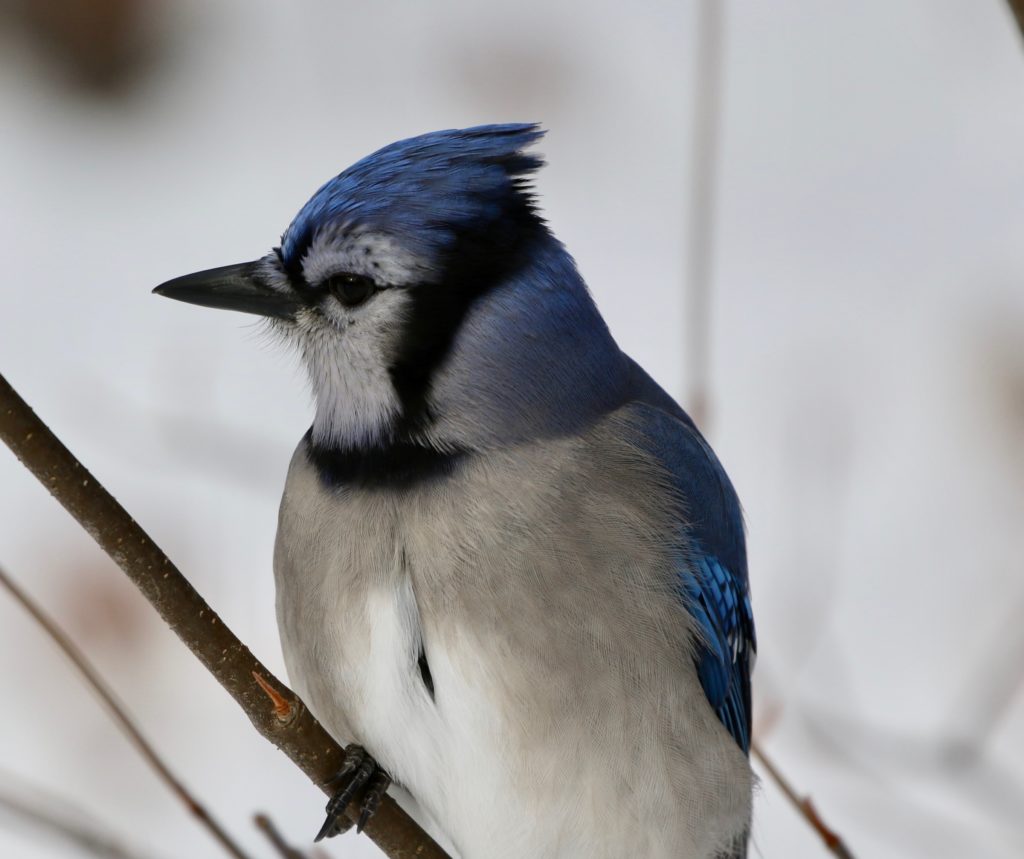
We followed the boardwalk through the spruce forest and across an open marsh, then through another forest before we came to a narrow open area, where the trail turned back towards the highway. Here we heard a woodpecker calling. While we stood in place, the bird flew across the open marsh and lit on top of a spruce behind us. A male Black-backed. As we watched it sitting in the sun, craning its head to get a better look at us, we could clearly see the yellow patch of feathers on its forehead.

After a minute, the bird flew back to a tree on the other side of the marsh. It hitched up the trunk till it sat in the sun again. The light was so intense that the black feathers on the bird’s head took on a bluish cast. Within seconds, the woodpecker disappeared again into the depths of the forest.
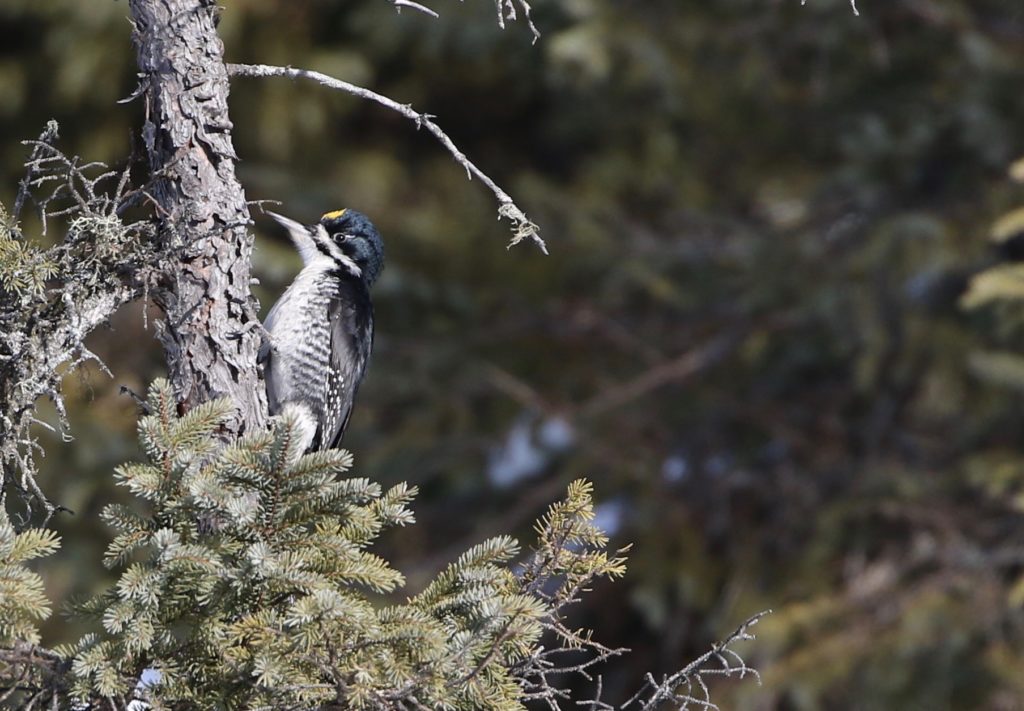
This was our trip highlight. We saw fewer birds as the day wore on, till we found ourselves taking a lonely walk down a final trail, our only companion one of the park’s magnificent Common Ravens. He would precede us down the path and then wait in a tree on one side till we came up, when he would croak out a greeting and flap off again. He either followed or led us on for over an hour. We took his stygian presence as an omen but were unable to decide whether for good or ill.
